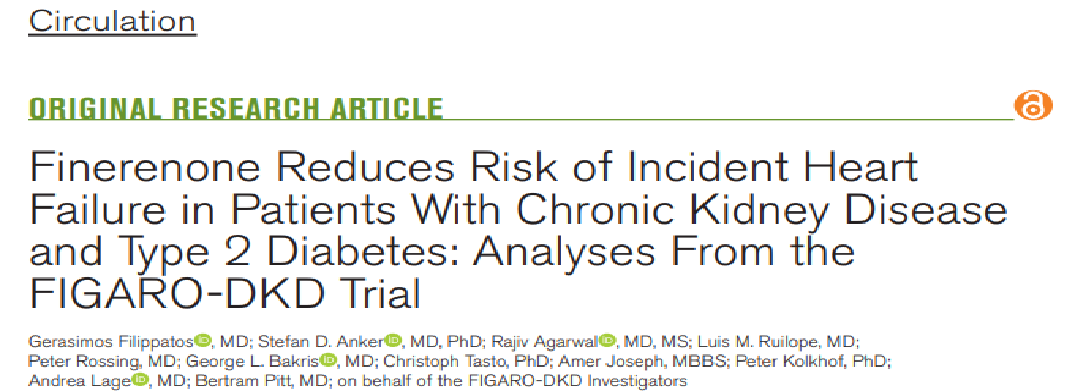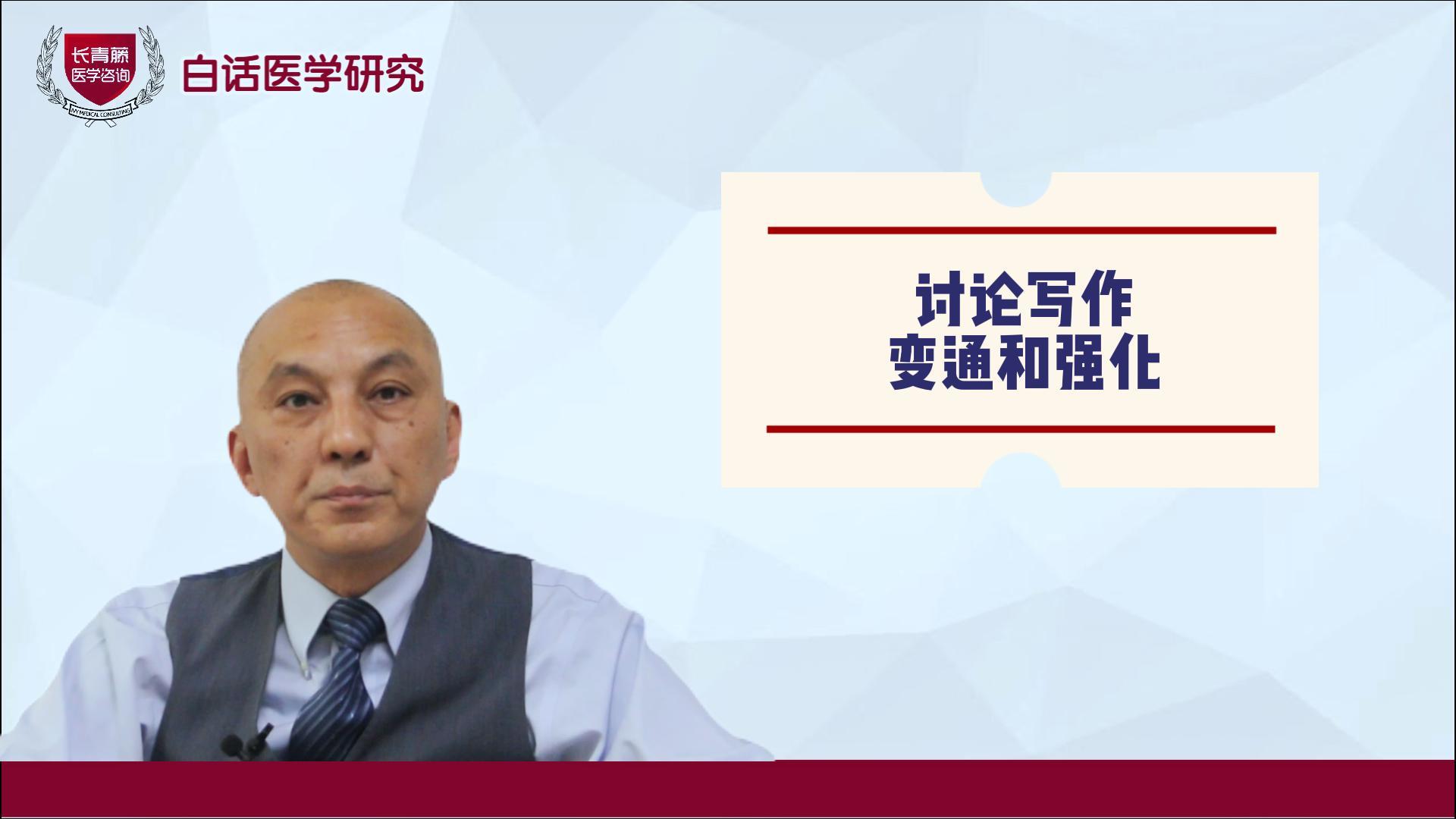2022-05-26


Filippatos G et al.Circulation. 2022 Feb 8;145(6):437-447.
慢性肾脏疾病和2型糖尿病与心力衰竭(HF)独立相关,心力衰竭是发病率和死亡率的主要原因。在FIDELIO-DKD和FIGARO-DKD 试验中Finerenone(非尼罗酮)改善白蛋白尿慢性肾病和2型糖尿病患者的心血管结局。研究主要评估非尼罗酮对临床HF结局的影响
研究纳入7352例患者,571例患者(7.8%)有HF史,与安慰剂相比,非尼罗酮显著降低了新发HF (1.9% vs 2.8%)(HR,0.68 ,95% CI, 0.50-0.93;P = 0.0162)心力衰竭患者的发生率明显低于安慰剂,风险降低18% (HR,0.82 ,95% CI, 0.70-0.95;P=0.011),首次HHF风险降低29% (HR, 0.71 95% CI, 0.56-0.90;P=0.0043)
FIGARO-DKD分析结果表明,无论有无心衰史,非尼罗酮均可显著降低慢性肾脏疾病和2型糖尿病患者新发心衰疾病发生率,以及其他心衰患者结局也显著改善。
Background: Chronic kidney disease and type 2 diabetes are independently associated with heart failure (HF), a leading cause of morbidity and mortality. In the FIDELIO-DKD (Finerenone in Reducing Kidney Failure and Disease Progression in Diabetic Kidney Disease) and FIGARO-DKD (Finerenone in Reducing Cardiovascular Mortality and Morbidity in Diabetic Kidney Disease) trials, finerenone (a selective, nonsteroidal mineralocorticoid receptor antagonist) improved cardiovascular outcomes in patients with albuminuric chronic kidney disease and type 2 diabetes. These prespecified analyses from FIGARO-DKD assessed the effect of finerenone on clinically important HF outcomes.
Methods: Patients with type 2 diabetes and albuminuric chronic kidney disease (urine albumin-to-creatinine ratio ≥30 to <300 mg/g and estimated glomerular filtration rate ≥25 to ≤90 mL per min per 1.73 m2, or urine albumin-to-creatinine ratio ≥300 to ≤5000 mg/g and estimated glomerular filtration rate ≥60 mL per min per 1.73 m2), without symptomatic HF with reduced ejection fraction, were randomized to finerenone or placebo. Time-to-first-event outcomes included new-onset HF (first hospitalization for HF [HHF] in patients without a history of HF at baseline); cardiovascular death or first HHF; HF-related death or first HHF; first HHF; cardiovascular death or total (first or recurrent) HHF; HF-related death or total HHF; and total HHF. Outcomes were evaluated in the overall population and in prespecified subgroups categorized by baseline HF history (as reported by the investigators).
Results: Overall, 7352 patients were included in these analyses; 571 (7.8%) had a history of HF at baseline. New-onset HF was significantly reduced with finerenone versus placebo (1.9% versus 2.8%; hazard ratio [HR], 0.68 [95% CI, 0.50-0.93]; P=0.0162). In the overall population, the incidences of all HF outcomes analyzed were significantly lower with finerenone than placebo, including an 18% lower risk of cardiovascular death or first HHF (HR, 0.82 [95% CI, 0.70-0.95]; P=0.011), a 29% lower risk of first HHF (HR, 0.71 [95% CI, 0.56-0.90]; P=0.0043) and a 30% lower rate of total HHF (rate ratio, 0.70 [95% CI, 0.52-0.94]). The effects of finerenone on improving HF outcomes were not modified by a history of HF. The incidence of treatment-emergent adverse events was balanced between treatment groups.
Conclusions: The results from these FIGARO-DKD analyses demonstrate that finerenone reduces new-onset HF and improves other HF outcomes in patients with chronic kidney disease and type 2 diabetes, irrespective of a history of HF. Registration: URL: https://www.clinicaltrials.gov; Unique identifier: NCT02545049.
百度浏览 来源 : 医微客
版权声明:本网站所有注明来源“医微客”的文字、图片和音视频资料,版权均属于医微客所有,非经授权,任何媒体、网站或个人不得转载,授权转载时须注明来源:”医微客”。本网所有转载文章系出于传递更多信息之目的,且明确注明来源和作者,转载仅作观点分享,版权归原作者所有。不希望被转载的媒体或个人可与我们联系,我们将立即进行删除处理。 本站拥有对此声明的最终解释权。




发表评论
注册或登后即可发表评论
登录注册
全部评论(0)